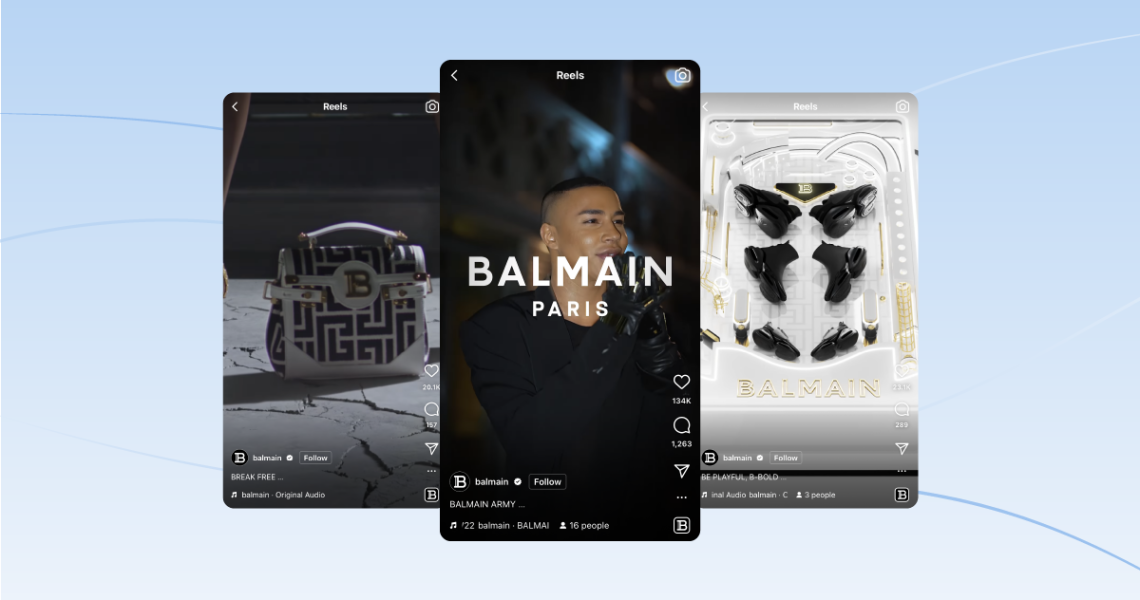Marie La France, vice president of strategy, Dash Hudson
In the last 10 years, social media has undergone a significant transformation. The last decade has primarily focused on building an active social community, with vanity metrics such as likes and followers perceived by brands as critical indicators of success. However, priorities are shifting as consumers’ social media use is becoming more understood, with entertainment at the forefront.
Consumers are shifting away from traditional social media experiences, and the connection-based feeds associated with them toward video-driven entertainment formats found on TikTok, Reels and Shorts. Zenith Media reported that the average person spent 100 minutes watching videos every day in 2021.
On the front lines of this shift toward short-form video is TikTok, with “entertainment” as the platform’s most popular category, topping 535 billion hashtag views. It comes as no surprise that TikTok compares itself to Netflix, while Instagram is repositioning as an entertainment provider. Short-form video is at the heart of this change and has become a primary function for social channels, brands and creators, who are often defining trends. The era of social entertainment is here, and it’s the most effective way for brands to reach consumers.
Marketers must remember: Creative is king
According to Nielsen Catalina, 56% of brands’ sales lift from digital advertising can be attributed to the creative quality. In short: Marketers have complete control over creative, and if they master it, they can break through an incredibly crowded space. The days when the number of followers determined how many people saw content are over. Today, consumers are delivered content based on their interests, meaning that reach is uncapped, and the best content thrives.
TikTok’s offbeat nature suits some brands’ personalities well. Still, it is no secret that other brands have been slow to embrace the platform due to uncertainty about whether it aligns with their strategies — legacy and luxury businesses in particular.
However, among the first luxury brands to embrace TikTok was Balmain, a brand that drives engagement with branded stories by understanding that quality content, not audience size, has the most significant impact.
Through creative insights gleaned from analysis of Balmain’s content performance, the team produced organic content and experimented with formats, such as podcasts, Netflix collaborations and festivals, while remaining true to the brand’s heritage as a luxury fashion house.
With a 279% increase in website clicks since employing a data-backed creative strategy, Balmain demonstrated how vital using the right insights can be in this new approach to content creation. “We love how Dash Hudson handles data,” said Jeremy Mace, head of digital marketing at Balmain. “It allows us to drill down and explore crucial metrics seamlessly and create reports that we can share with other teams and internal stakeholders.”
Merging shoppable content with authentically entertaining content
During the pandemic, consumers were accustomed to doing things online that were once done in person, such as socializing, attending concerts and shopping. In fact, 70% of consumers believe that online marketplaces make buying more convenient, allowing brands to merge shopping and entertainment into a single experience.
Social content that directly encourages customers to checkout is becoming the norm, with brands having more tools than ever to make content shoppable. While this may have felt overly commercial in the past, some social platforms are reporting a shift in how users are receiving content that actively sells to them. A report by TikTok found that users associated the advertising on its platform with being authentic, fun and genuine. In addition, 43% of users say that advertising on the platform blends in with the content.
In keeping with authenticity, TikTok has allowed brands that have been viewed as more “corporate” in the past, such as RyanAir, Grammarly and BMW, to push boundaries by going behind the scenes, leveraging humor if it feels authentic, or creating useful content for viewers. This content allows viewers to connect emotionally with a brand’s narrative and product, facilitating a more engaged community of buyers.
Forging long-term partnerships with creators
Creators are central to the social entertainment era. For years, brands have relied on influencers as a core part of their social marketing strategies, but there has been a gradual shift toward forming longer-term partnerships with creators.
In contrast to influencer marketing, creator marketing focuses on producing content that entertains rather than prioritizing product placements. This method helps brands form more meaningful partnerships with creators and produces lasting customer sentiment beyond a single sponsored post.
These long-term creator partnerships will likely become crucial for brands’ marketing strategies.
On TikTok, the most popular content features faces, not only because it humanizes brands but also because it allows them to build familiarity with their audiences. However, content creators do not necessarily need thousands of followers and a track record of entertaining viewers to become successful. By strategically analyzing the performance of their content and understanding how it can capture attention, social media managers are becoming increasingly empowered to represent their brands themselves.
Amid the rise of social entertainment, marketers must remember that creative is king — delivering the best content is and always will be most important. On top of this, finding ways to merge shoppable and entertaining content and fostering long-term relationships with creators will leave marketers in a good place as social entertainment gains even more popularity.
Social media is only getting faster, and the brands that take bold steps will find significant success. With real-time insights, marketers can develop agile strategies geared toward delivering the best creative and, ultimately, driving real results.
Sponsored By: Dash Hudson




